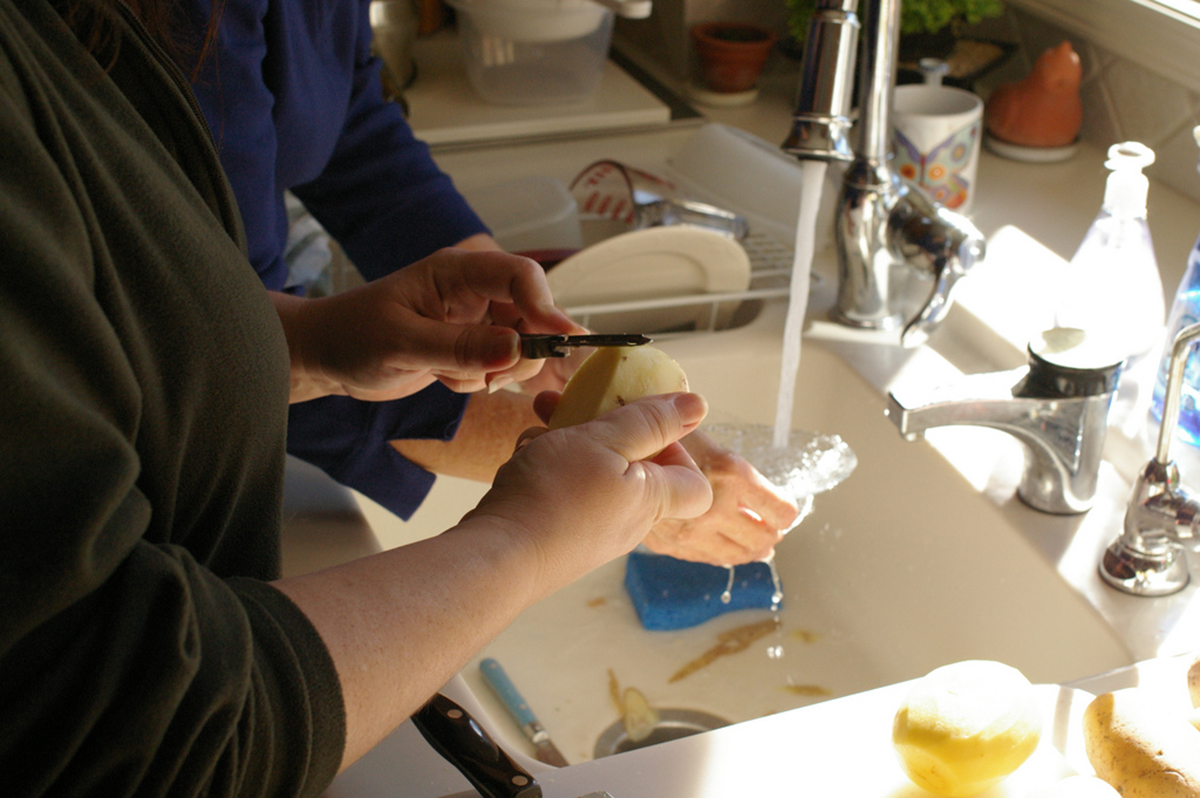Paleo dieters know that certain foods are simply not conducive to diet success. They know to stay away from wheat in all its incarnations. Non-fermented dairy products are a known problem, and soy, beans, peas, and other legumes are obvious deletions from the daily dietary plan.

The foods that cause paleo dieters the greatest distress, however, sometimes appear on the "approved" list. Their effects are more intense when other toxic foods are omitted from daily eating.
Amaranth (the green vegetable) and quinoa (the grain)
Quinoa is the seed of the amaranth plant. We all know quinoa and amaranth leaves are among the healthiest of all foods, right? It is true that they contain nearly complete protein and most of the vitamins and minerals we need in a low-calorie package.
If you have peptic or duodenal ulcers, or if you have Crohn's disease or ulcerative colitis, eating these foods on an otherwise healthy diet can make you miserable, and cause you to give up an otherwise wholesome and healing diet.
Chile peppers
It is a common misconception that eating spicy foods seasoned with chili peppers can cause acid reflux disease. Actually, there is some evidence that chili peppers actually reduce the severity of acid reflux disease and GERD (gastroesophageal reflux disease). The problem with chili pepper for acid reflux sufferers is that they usually eat too much of the chili-flavored food, and it's the volume of food in the stomach that pushes acid upwards. However, the stinging, burning chemical capsaicin in hot peppers can make diarrhea an especially unpleasant experience.
Read More: Paleo Diet Dilemma: The Facts About Fructose
Egg whites
Protein foods that are high in phenylalanine tend to result in the formation of hormones that override appetite control centers in the brain. (Seal meat, if you were inclined to eat it, would have a similar effect.)
But egg whites pose another for paleo dieters. Egg whites contain a group of enzymes known as lysozymes, which in nature help the chick break out of its shell. When you eat egg whites in excessive, your muscles may become inflamed by their enzyme content. Don't just limit egg yolks. Limit egg whites, too. And be aware that eating raw egg whites can deplete the body's supply of the B vitamin biotin, which is a cofactor for the enzymes that burn fat.
More Surprising Paleo No-No's
One of the most problematic foods on any diet is the potato, but not just because of its starch content.

Potatoes with the peel
They contain resistant starch that feeds probiotic bacteria, rather than fat cells, and if they are boiled and served warm rather than piping hot, they don't have a particularly high glycemic index. The problem is the peel.
The potato peel is high in potassium, but it is also the part of the tuber that makes the toxic alkaloids solanine and chaconine. Even small amounts of green potato peelcan cause burning in the throat, burning in the lower digestive tract, and fever, and large amounts of green potato peel can cause dizziness, fever, hallucinations, miscarriage in pregnant women, and even death.
And never, ever eat any part of the Irish (white) potato plant except the tuber, the spud. Sweet potato leaves, on the other hand, are a nutritious green vegetable.
Root beer
Root beer contains quillaja extract, which also contains the soap-like chemicals known as saponins. In excess, root beer can literally make the contents of the stomach and gut "soapy," and irritate their lining in the same way that washing dishes can cause dish-pan hands. The compound also stimulates a kind of white cell known as a macrophage, which is the white cell that gets trapped in, and increases the mass of, belly fat.
Tomatoes
Devotees of the Perfect Health Diet probably have been told, correctly, that of all the relatively high-sugar "fruits," the tomato has the best ratio of the potassium we all need to the fructose we usually don't. Many people get most of their potassium from tomatoes.
The problem with tomatoes is that they also contain yet another saponin called alpha-tomatine. This compound can literally be used to make soap.
Read More: The Truth About Paleo Diets
But alpha-tomatine is also one of two compounds (along with lycopene) that makes tomatoes so effect in reducing the risk of prostate cancer. In addition to irritating the lining of the digestive tract, alpha-tomatine protects cells in the prostate gland in men from changes in DNA that can lead to cancerous transformation. The lycopene in tomatoes also protects against prostate cancer and makes sperm better "swimmers" so that men are more likely to become dads after sexual intercourse with their female partners.
So, eat tomatoes with caution. You don't want too much sugar, and you don't want to inflame your digestive tract. Men only need the equivalent of about 2 servings of tomatoes a week for maximum prostate protection, which may not be enough to cause any kind of gastrointestinal distress.
- Correa AD, Jokl L, Carlsson R. Chemical constituents, in vitro protein digestibility, and presence of antinutritional substances in amaranth grains. Arch Latinoam Nutr. 1986.Jun
- 36(2):319-26.
- Naknukool S, Horinouchi I, Hatta H. Stimulating macrophage activity in mice and humans by oral administration of quillaja saponin. Biosci Biotechnol Biochem. 2011. 75(10):1889-93. Epub 2011 Oct 7.
- Photo courtesy of Sharon by Flickr : www.flickr.com/photos/sharontroy/5003784809/
- Photo courtesy of Rhett Sutphin by Flickr : www.flickr.com/photos/rsutphin/3105652541/


Your thoughts on this